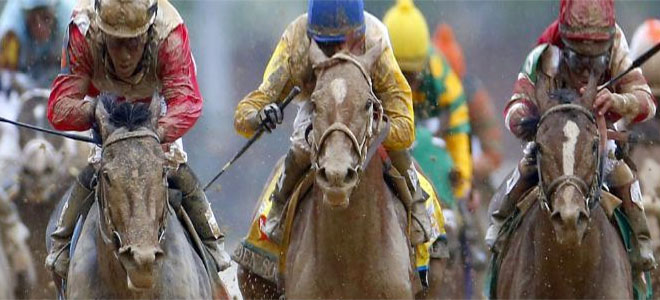
Thoroughbreds Are Running as Fast as They Can
by Roger Pielke, Jr.
FiveThirtyEight
On Saturday, 19 thoroughbreds will once again be off, running in the 140th Kentucky Derby. The Derby calls itself “the greatest two minutes in sport” because that’s more or less how long it takes to win the race, and that hasn’t changed in decades. Since 1949, the time it takes thoroughbreds to run around the 1.25-mile track has averaged 2:02.25, and no winning race time has deviated by more than 3 seconds from this long-term average.
Mark Denny, who studies biomechanics at Stanford University, wrote a 2008 paper that asked, “Are there absolute limits to the speed at which animals can run?” He looked at the statistics of the fastest times each year for the Triple Crown horse races (which include the Preakness Stakes and Belmont Stakes in addition to the Kentucky Derby), three premier greyhound races in England, and elite men’s and women’s athletics at distances of 100 meters to the marathon.
The data reflected remarkable achievements by the fastest horses, dogs and people. Denny fit the data with a statistical model, and then used extreme value theory (since the data was about the best in each sport) to calculate a maximum speed limit.1 Some race times, like the Kentucky Derby’s, have plateaued, while others are still improving, like the men’s 100-meter race. This approach suggests that the fastest time possible for a human in a 100-meter race is 9.48 seconds. Usain Bolt’s world-record time is only 0.10 seconds from the limit.
Denny says his approach tells us “that speed has its limits, but not what accounts for those limits.” There are, however, a few possible explanations for why thoroughbreds may have already hit those limits but humans, for the most part, have not yet plateaued.
One possibility, advanced by Denny and others, is that thoroughbred race times may have leveled off because the narrow genetic diversity of racehorses limits the genetic diversity in the pool of potential thoroughbred champions. Modern thoroughbreds are descendants of a small number of horses (less than 30 in the 18th century), and 95 percent are thought to trace their ancestry to a single horse, The Darley Arabian. Today, there are fewer than 25,000 thoroughbreds born each year in the United States. Compare that with the more than 7 billion people worldwide.3 The size of the human population may simply lead to a greater number of potential athletes with extreme speed. Read more …

